I am looking for a way to create my own color palettes that could be called within ggplot, and exported and shared with my team - not requiring to define palettes at each .R code. Something like custom Excel theme colors saved as *.thmx for instance.
It would ideally looks like this :
ggplot(mtcars, aes(wt, mpg)) +
geom_point(size=4, aes(colour = factor(cyl))) +
scale_colour_brewer(palette="Mypalette")
with Mypalette being somehow saved in the desktop and being callable directly, not requiring to define it within my code beforehand.
or like Viridis package - probably not the simplest solution
ggplot(mtcars, aes(wt, mpg)) +
geom_point(size=4, aes(colour = factor(cyl))) +
scale_color_viridis(discrete=TRUE)
My goal is to end up with common shared palettes allowing visual coherence within graphs made by several contributors.
If you have any tips or advice, I'm more than interrested !
Thanks a lot !
